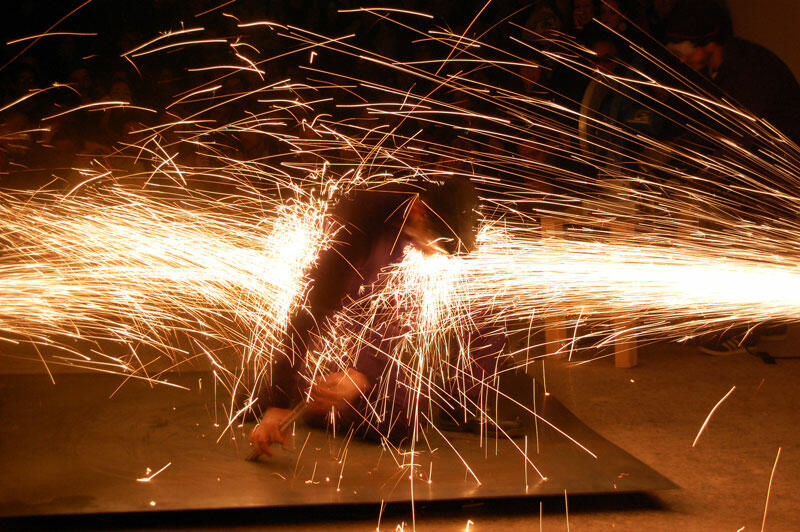En defensa propia' by Enrique Ježik at Fundación Osde
This Thursday, May 17 at 7:00 pm opens In Own Defense, the solo exhibition of the artist Enrique Ježik curated by María Teresa Constantin at the Osde Foundation, Autonomous City of Buenos Aires.

Legal doctrine has always discussed the uses, validity and limits of self-defense. In the construction of your belief system it seems that the when and how a counterattack must be exempted or sanctioned is debatable, malleable, accommodating matter to the epochal needs.
In self-defense, he presents a set of works by Enrique Ježik in which the instinct of conservation, within the limits of that doctrine, emerges as a substratum that justifies a vast arch of contemporary frights that settle precisely in the custody of supposed own rights or outsiders
Thus, in 1996, Ježik carried out a work (not exhibited here) titled in the same way. In that object, between the minimal purity of a glass case on polished metal legs and the brutality of a protective fence that surrounded the upper part of the box, the artist referred to various concentration universes. The sense intensified with the human bones that the transparent cube contained inside. With ironic gravity, the title referred there to the regimes that in the name of the defense of Western and Christian values committed the worst aberrations against the citizens they had to protect. Chosen as the title for this exhibition, the statement - as the artist points out - seemed appropriate to the character of that set of works and I saw that expression as adequate to allude to all or almost all my work. Somehow, talking about the issues I deal with is a form of self-defense against a very harsh reality, and even if I think of it in a more collective or social sense of which I am a product and a part, it also seems to me that there is a need to defend / defend ourselves from so much damaging situation that we get on top of it. *
The works exhibited were produced during almost 20 years of work, between 2001 and 2018, during which the artist has been outside of Argentina. An extensive exploratory trajectory that goes from the body of the sculptor from his beginnings in the art-production that underlies his works and that usually takes up regularly in different artistic objects-to the artist's own body, a performer body that gets involved-as an interpreter or director -in the actions retained in the videos and installations. As curator Cuauhtémoc Medina pointed out for a 2011 exhibition ... they are part of a broader diagram that actually flows, and flows back, without a strict chronological order, as part of a complex cycle of jobs that revolve around employment modalities and visibility of force and its instruments as signs and factors of contemporary history. **
In this way, we are interested in thinking about the works exhibited, not as isolated exhibition units, but as a space, that of the art room, occupied by the conflict. A territory where performance practices, videos, installations, photographs and sound are crossed by a strip that leads the dispute between territories of power, domination, violence, resistance and destruction. Thus, the brutality of the gesture resonates in the institution in the sounds that are prolonged in the room. Persistent, repeated tirelessly, they also exercise an act of violence. Institution and public are submitted to an intangible action but not for that reason less innocent.
In the same way, a shoot-out in any country, the exacerbation of the spilling of guts and blood, the beating of the flesh as an act of endless pain, the close-ups and the monumentalization of the image or word-as an oracle or as war strategy-obstructing the free wandering are powerful speeches, they too, to be thrown to the viewer.
If the dead bodies are already easy to ignore, the work of Ježik, his cluster of viscera and perforated bodies indicates and forces to face the disgust of the debris of death. ***
M. T. Constantin
Curator.
* Taken from a conversation by email.
** Cuauthémoc Medina, "The interminable party", in Obstruct, destroy, hide. Enrique Jezik, Mexico, UNAM / MUAC, 2011.
*** Susan Cusik, musicologist at New York University, has investigated acoustic violence in contemporary wars. In their cases-Northern Ireland, USA, among others-analyzes how repetition and loud music are psychological torture but also physical effect, and were used not only in prisoners but also in the training of troops to develop their resistance.




